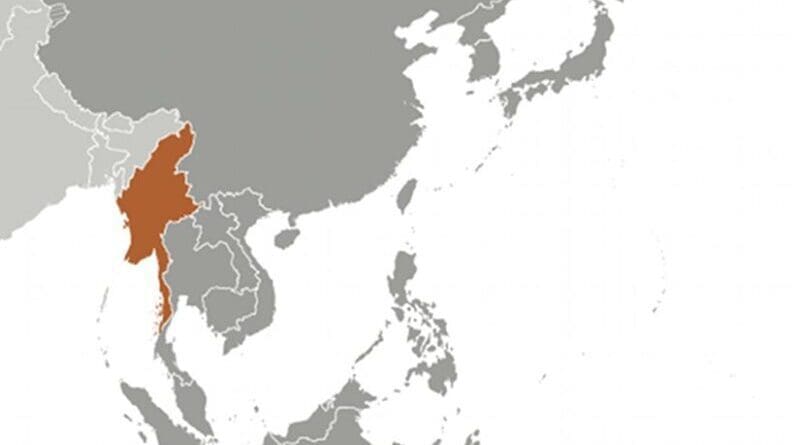Impact Of Communal Clashes On Myanmar’s Reform Project – Analysis
Addressing the World Economic Forum meeting in Bangkok on 1 June, opposition leader Aung San Suu Kyi underlined the need to be cautious about embracing Myanmar as the new investment destination of the world. She asked the investors to retain a ‘healthy skepticism’ and beware of ‘reckless optimism’ when dealing with Myanmar. She insisted that given the long standing problems the country still faces, potential investors need to rethink the pace at which they converge on this Southeast Asian nation. Although Suu Kyi had not identified the communal situation as one of the potential flash points, within days of her speech, violence broke out in the western Rakhine state highlighting the multiplicity of challenges that the ethnically fragmented country faces in its ongoing reform project.
In Rakhine state, abutting Bangladesh, Buddhist Rakhines and Rohingya Muslims share a long history of hostility. Recent sparks flared following the gang rape and murder of a Buddhist woman in May 2012, widely blamed on Muslims. On 4 June, 10 Muslims were killed by a Buddhist mob in an attack on a bus. Attackers had mistakenly believed some passengers to be responsible for the murder. On 8 June, after Friday prayers, Muslims gathered in the town of Maungdaw and began attacking nearby buildings. Violence soon spread to the port city of Sittwe, the capital of Rakhine State, and subsequently to the adjoining villages. Rival mobs torched houses and clashed with makeshift weapons. Till the writing of the report, violence had claimed at least seven lives.
The severity of the problem was underlined by the declaration of a state of emergency in the Rakhine state by the President on 10 June. The declaration followed the 9 June imposition of Section-144 of the Code of Criminal Procedure as a precautionary measure after the administration realised that this was no longer “enough to conduct administrative work effectively.” Thein Sein warned against “never-ending hatred, desire for revenge and anarchic actions” as he allowed the Army to take steps to quell the violence, rooted in a highly complicated past.
Rohingyas, numbering 800,000, a stateless people, are described by the United Nations as one of the world’s most persecuted minorities. They have long demanded recognition in Myanmar as an indigenous ethnic group with full citizenship, claiming a centuries-old lineage in Rakhine State. But the Myanmar government regards them as illegal immigrants from Bangladesh and hence denies them citizenship.
Bangladesh, which shares a 271-kilometre border with Myanmar, on the other hand, treats them as refugees too. The country is already home to about 300,000 Rohingyas. Only about a tenth of these refugees live in two official refugee camps in southern Cox’s Bazaar, while the rest have mingled with the host population. Few of these Rohingyas have also been recruited by terrorist outfits like the Harkat-ul Jihadi Islami (HuJI) and have landed in Pakistan to fight in support of the al Qaeda.
Bangladesh is again likely to be affected by the influx of Rohingya refugees displaced by the ongoing crisis. Media reports have indicated that refugee-laden boats have been turned back by the Border Guard Bangladesh (BGB) personnel in the Teknaf river, which must be crossed by the refugees to reach the Bangladeshi landmass.
While it is a matter of managing hordes of refugees for Bangladesh, the crisis has deeper implications for Myanmar. It poses a challenge to reform-bound Myanmar and its pro-reform President. The ongoing clashes have been dubbed as the worst communal violence during the year-old tenure of the reformist government. The issue of the Rohingyas, a point of criticism for human rights groups for decades, now demands urgent attention from Naypyidaw. While the government has done well to rope in majority of the ethnic militias through ceasefire agreements, the ongoing communal conflict poses a whole new challenge.
On 10 June Thein Sein said that ‘vengeance and anarchy’ could spread beyond Rakhine State and jeopardize the country’s ‘stability, democratization process and national development’. Indeed, the impact of the communal clashes has repercussions on the fragile ceasefire agreements achieved with many ethnic insurgencies, including the Arakan Liberation Army (ALA), which demands independence for the Rakhine State. In the worst case scenario, uncontained riots might prod some of the insurgent groups to take sides as per their ethnic affection, inducing further fragility into the agreements. The actions of the government, being keenly watched by many ethnic groups, could influence their perception regarding the trustworthiness of the government.
More importantly, the violence and corresponding instability is a new affront on the investment-friendly image that the government is trying to build for the country. The township of Thandwe in Rakhine State, where curfew has been imposed, is the gateway to Myanmar’s tourist beaches. Similarly, in Kyaukphyu, which too is under curfew, China is building a port complex. Continuing violence in the long-run could hurt tourism and foreign investment expected in Myanmar. Interestingly, while the European Union has appreciated the ‘measured’ handling of the crisis, the Organization of Islamic Cooperation (OIC) has condemned the ‘systematic acts of violence and intimidation’ against the Rohingyas. Myanmar can do very well without such negative publicity.
This article was published by IPCS and reprinted with permission.

